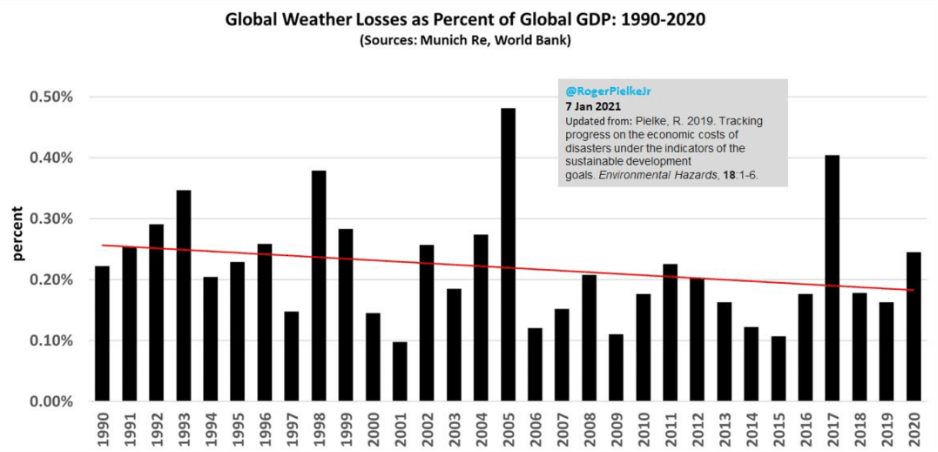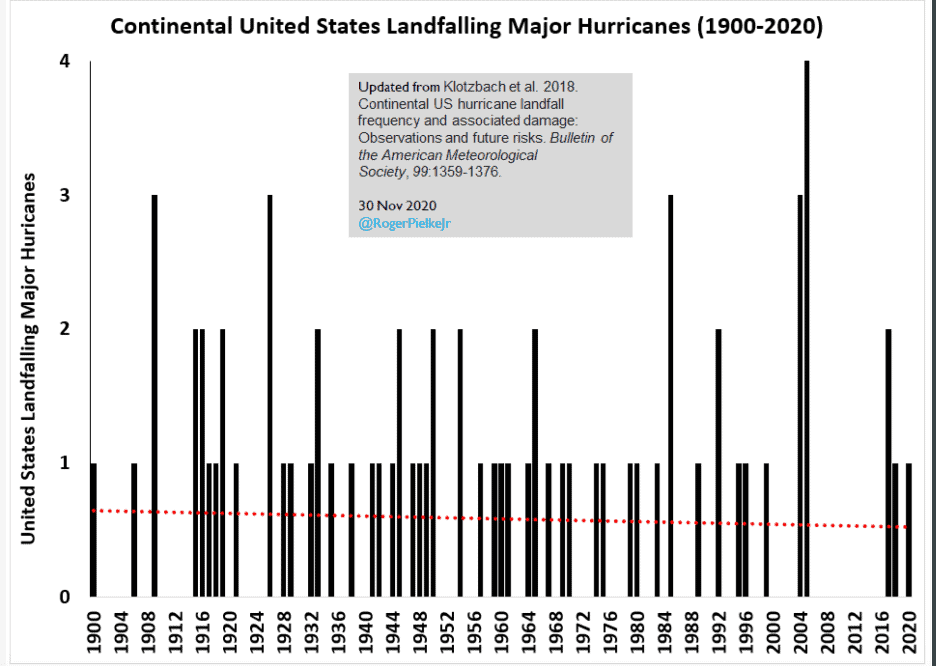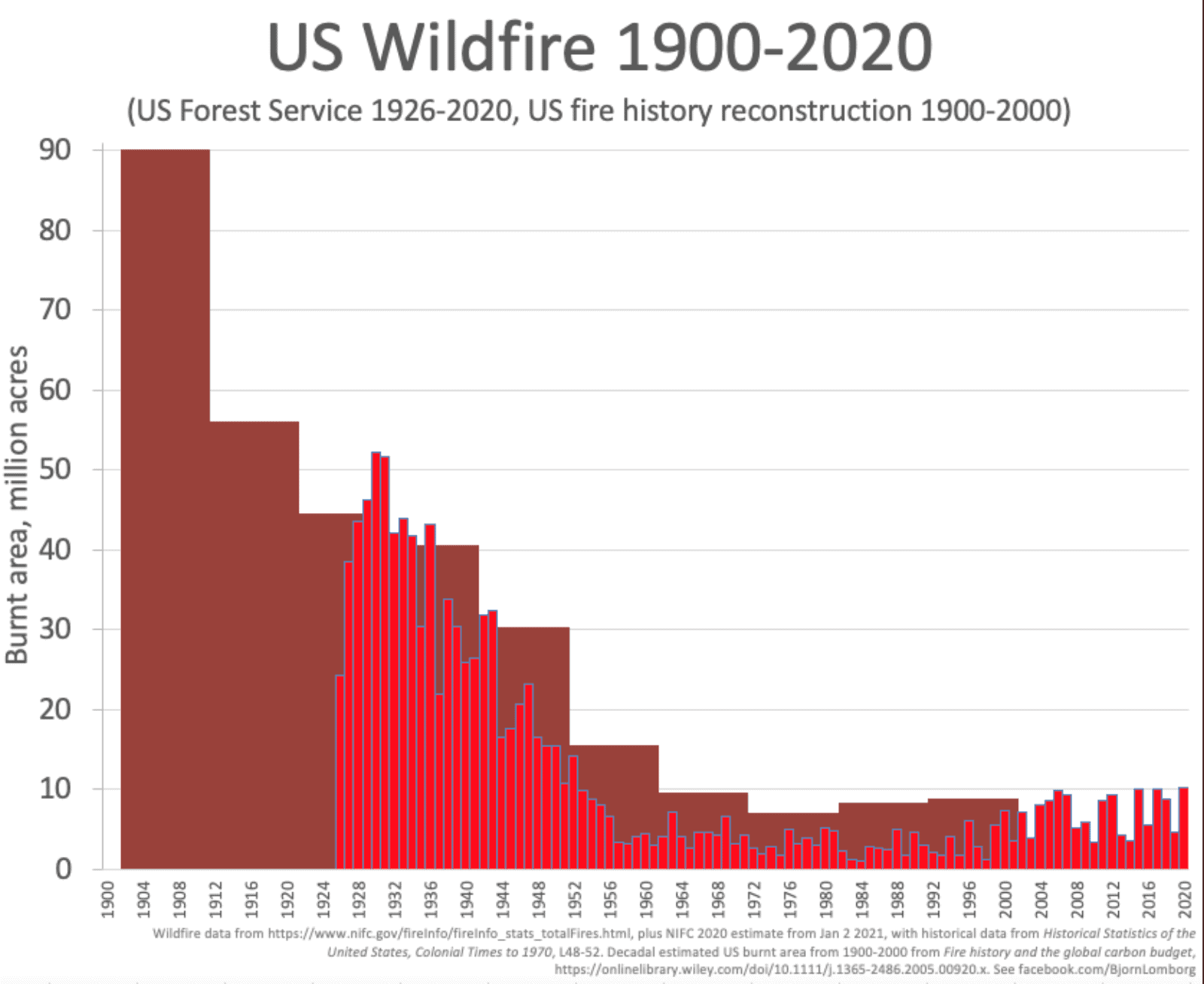A Civilian Climate Corps Cannot Address a Climate Emergency

Photo Credit: Getty
In my previous post, I explained that high-profile political figures, including President Biden, are currently pushing for the creation of a Civilian Climate Corps (CCC). I also discussed its antecedent, the Civilian Conservation Corps, which was enacted in the 1930s as a part of President Franklin Delano Roosevelt’s New Deal. I also noted: 1) that the government works programs of the 1930s, including the CCC, did not accomplish their primary goals, and 2) the economic reasons why government works programs often fail. I will now turn to the justifications being used to push for a new CCC.
In a recent letter to House Speaker Nancy Pelosi and Senate Majority Leader Chuck Schumer, more than 80 Congressional Democrats “collectively ask[ed] that the upcoming reconciliation package include text that supports and funds a Civilian Climate Corps program.” They gave two central reasons why we should revive the CCC. This blog post will focus on the first: the increasingly dire effects of climate change.
At the outset, the letter reads:
The United States experienced 22 billion-dollar weather and climate disasters in 2020, shattering the previous annual record of 16 events. 2020 was the worst fire season on record, burning over 10.2 million acres and costing over $16 billion in damages and $3 billion in suppression costs. The U.S. experienced a record-breaking 30 named tropical cyclones, 7 of which became billion-dollar disasters—also a new record.
As a result, they argue, it should be of paramount importance to combat these devastating effects of climate change through a new CCC. But—even though climate change is real and has mostly negative effects—this justification is weak on further examination.
First, the letter identifies the increased cost of economic damage caused by “climate disasters” as evidence that we are in the midst of an emergency. But the truth is that economic damage would have gotten worse whether or not more severe natural disasters were taking place because of a phenomenon known as the “expanding bull’s-eye effect.” Commenting on this phenomeon, Bjorn Lomborg, a visiting professor at Copenhagen Business School and a visiting fellow at Stanford University’s Hoover Institution, writes in his book False Alarm:
[S]imilar climate impacts will result in more costly disasters because an increasing number of people with more and more valuable assets are at risk. The expanding bull’s-eye effect can be thought of as an archery target, with the rings (showing population density) telling us how many people and possessions are at risk of being hit by an imaginary arrow, or natural disaster.
As population increases and development takes up a greater proportion of total land—especially in high-risk areas—more natural disasters will inevitably hit somewhere within the bull’s eye, thus causing more economic damage than if there was no development there.
A good real-world example that Lomborg uses is in the coastal cities of Florida, where even as recently as 1990 it was not heavily populated. However, since then, “the coastal population of Florida has increased sixty-seven fold.” This means far more homes will now be in the path of any given hurricane. So even if the strength of the hurricanes in 1990 and 2020 were exactly the same, there would still be far more damage done now because of this expanding bull’s-eye effect.
Second, even if we were to assume that economic damage of natural disasters is a good measure of their severity, the facts still don’t line up with the letter’s narrative. Roger Pielke Jr., professor of Environmental Studies at the University of Colorado, has measured economic damage from natural disasters as a percentage of GDP. He found that, since 1990, economic damage from natural disasters has actually declined. The reason is that it is preferable to measure economic damage as a percentage of GDP, rather than based on raw numbers, because that considers the population and economic growth that has occurred over time.

Third, the letter claims that we just experienced our “worst fire season” and a record-breaking cyclone season. Pielke has also compiled data on major hurricanes in the continental United States since 1900. He did not find any dramatic increase, but rather a slight decrease.

Their claims about wildfires are similarly misleading. Publicly available data show that the levels of burning we are seeing today are not unprecedented or even close to the worst we have experienced since 1900.

Last, the data on deaths as a result of natural disasters should be relevant to the discussion regarding whether we are in the midst of an emergency. Based on data from the International Disaster Database, Lomborg concludes that the individual risk of dying from a climate-related disaster has declined by 98.9 percent since 1920 because of all the advances we have made in terms of technology, infrastructure, and development more generally.

Even if everything in the letter was accurate, there would still be little reason to revive the CCC. After all, if the problems were as massive in scale as the signatories claim, then having a few thousand young people combatting it would be a futile effort.
In my final post, I will address the second justification for a new CCC: the mass unemployment that has occurred due to the COVID-19 pandemic.